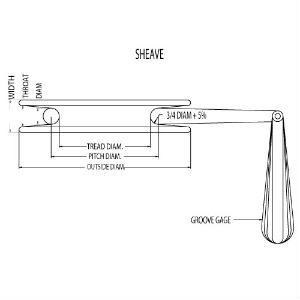 How to put together Bergen Cable assembly systems: four considerations
How to put together Bergen Cable assembly systems: four considerations
October 24, 2019 REDWIRE is news you can use from leading suppliers. Powered by FRASERS.
Posted by Bergen Cable Technology, Inc
Mfr Mechanical Cable, Cable Assemblies & Push-Pull Controls. Original Mfr Of Safety Cable, A Patented Fastener Reten... Read more
Subscribe
Free REDWIRE e-newsletter

Bergen Cable gives strong advice on cable assemblies.
Bergen Cable uses its decades of accumulated experience to give exemplary advice to customers on how to put together the strongest cable assembly systems. Its website is a fountain of valuable tips and resources on cable solutions, from basic information to wire-rope specifications. On the subject of putting cable systems together, Bergen points out four important considerations – assembly tolerances, conduit-length tolerances, safety factors in breaking strength, and how cable diameter relates to pulley or sheave diameter.
For reliable cable assembly systems
Production methods are often determined by the overall length tolerances that cable assembly systems need and by the cable’s cut lengths. This affects costs directly when putting systems together. Close assembly tolerances frequently cost more regarding production and quality assurance. So customers should ask the Bergen team to review and approve allowable tolerance and inspection methods prior to production.
Users are advised to consider the distance between designated measuring points as shown in the different sections when they specify assembly lengths. These measuring points are usually located at the fittings’ load-bearing points. For an assembly length of 100 feet or more, commercial tolerance should equal plus or minus two per cent of the length, while special tolerance should be plus or minus one per cent of the length. As the lengths decrease, so do these tolerance figures.
Customers should also have Bergen Cable review acceptable conduit-length tolerances and inspection methods before production begins. Overall tolerance should be plus or minus ¼ of an inch for conduit lengths between one and two feet, or 0.062 of an inch for lengths under a foot.
Another key consideration is direct stress and the shock in bending loads when determining the working load of cable. Then the user must apply a reasonable breaking-strength safety factor to the load. In many applications, the standard safety factor is five to one. Last of all, properly designed pulleys can enhance cable fatigue life, so the user should identify the smallest possible ratios of the tread and cable diameters.
By following these steps from Bergen Cable, cable assemblies gain reliability.
To learn more, contact Bergen Cable.
Share
Posted by Bergen Cable Technology, Inc
Mfr Mechanical Cable, Cable Assemblies & Push-Pull Controls. Original Mfr Of Safety Cable, A Patented Fastener Reten... Read more
